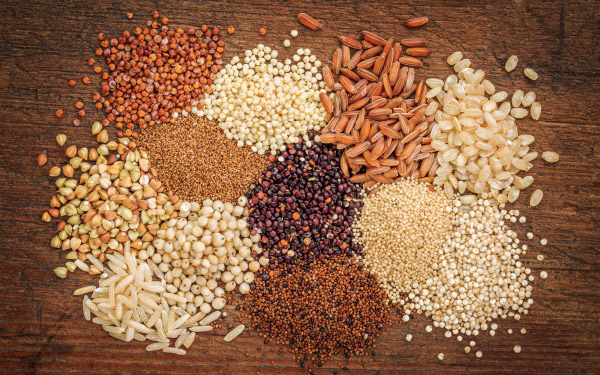
Gluten-Free Kitchen Basics
May is National Celiac Awareness Month, an ideal time to bring awareness to this disease that affects 1 in 133 Americans. Celiac disease is an autoimmune response to eating gluten, a group of proteins found in wheat, barley and rye. By eating gluten, people with this intolerance risk damage to their small intestine, which is responsible for absorbing nutrients. It also contributes to a host of uncomfortable digestive symptoms. Celiac is often, though not exclusively, genetic. It can develop at any age, and many people go for years without getting an accurate diagnosis. To date, the only treatment is to eat a gluten-free diet exclusively. Use these tips to learn more about going gluten free.
A Gluten-Free Kitchen
Naturally gluten-free, nutritious foods are available throughout the supermarket. Use this basic listing to stock a gluten-free kitchen. Always read food labels before use.
Fruits & Vegetables
• Fresh or frozen (plain) whole fruits and vegetables, 100% juice, most dried fruit
Meats & Beans
• Plain meat, poultry, fish, seafood, beans
Dairy
• Most plain, unflavored butter, milk, yogurt, cheese
Grains
• Amaranth, rice, corn, quinoa, buckwheat (not a variety of wheat), sorghum, teff, millet, corn starch
Condiments
• Jams, jellies, honey, nut butters, maple syrup, molasses, brown/white sugars, ketchup, mustard, pickles, olives, mayo, fresh spices, herbs
Snacks
• Corn chips, plain popcorn, plain nuts/seeds, rice crackers, plain jerky
Gluten Free
• Breads, baking mixes, flour, cereals, oats, snack bars, pasta, etc.
Kitchen Storage Tips
• Designate a gluten-free cabinet or pantry space.
• Replace any open condiment containers that may have been cross-contaminated with crumbs.
• Clearly label any foods not stored in their original package.
• Have a separate toaster for gluten-free items.
• Be mindful of utensils and surfaces when cooking to prevent cross-contamination of gluten-free foods.
Gluten-Free Label Reading
Thoroughly read the ingredients listing on all products. “Wheat free” does not necessarily mean “gluten free.” It’s also important to note that a lack of allergen labeling does NOT mean that the product is gluten free. Be cautious about these ingredients that may contain gluten.
• Malt
• Natural flavors
• Rice syrup
• Yeast extract
• Colorings and dyes
• Emulsifiers
For more information on celiac disease, consult a Weis Dietitian or visit beyondceliac.org.
